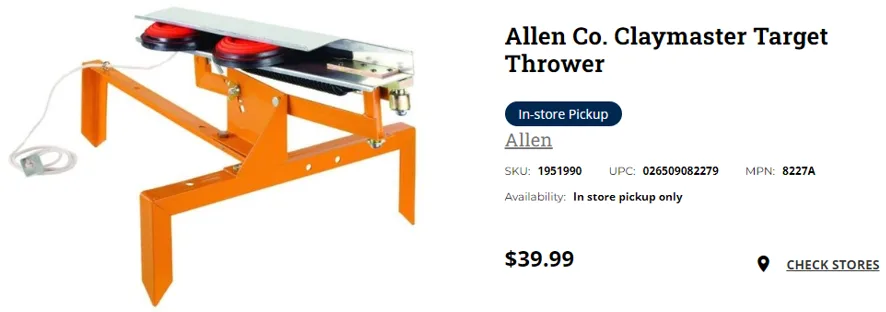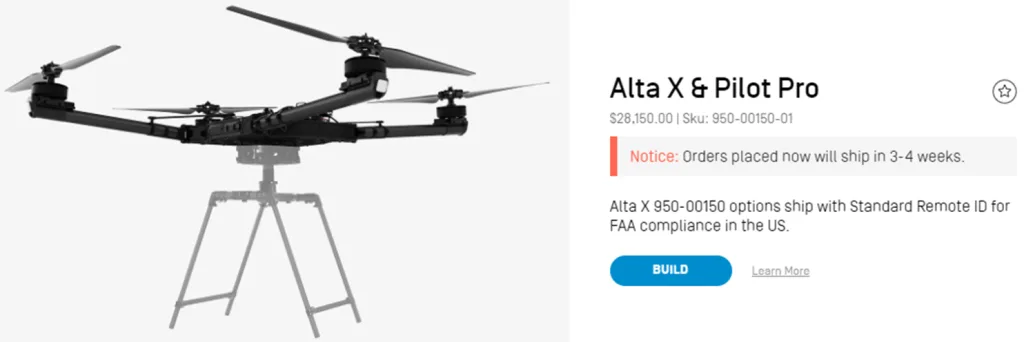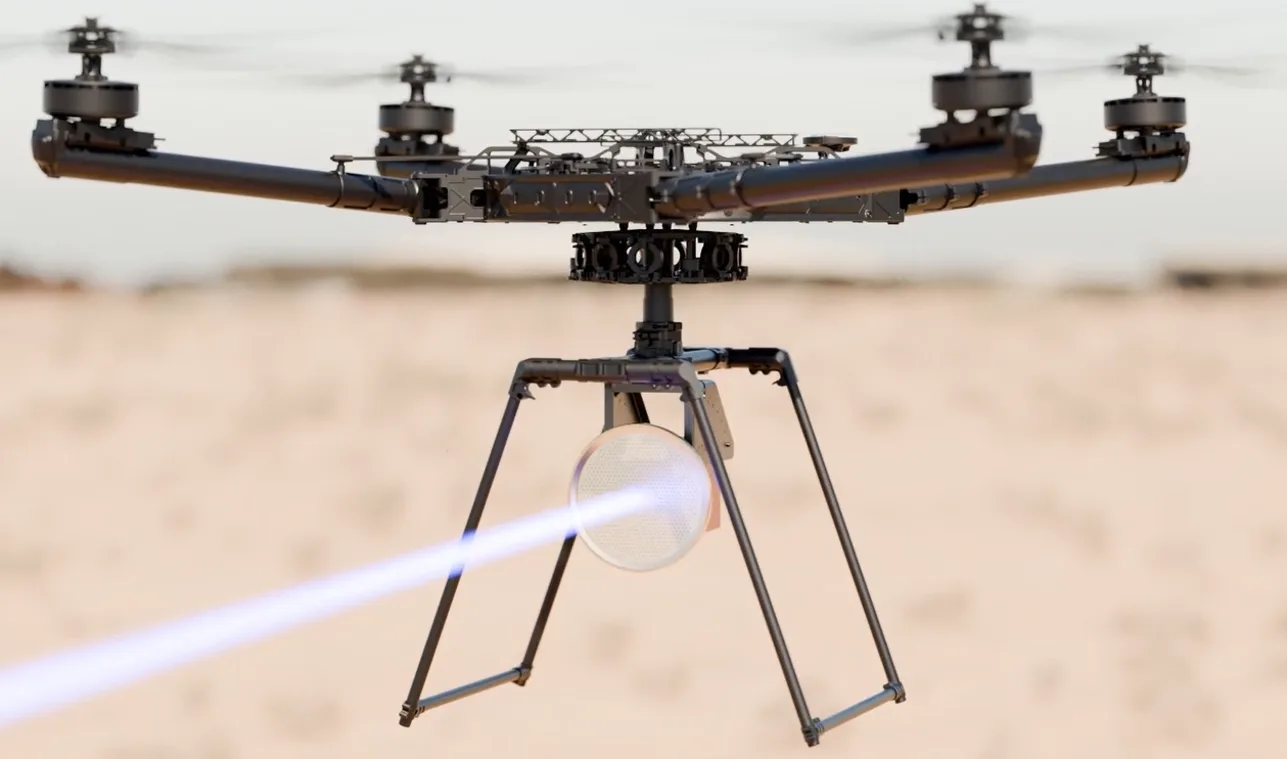“Follow the Free” on Your Laser Range Day
The Costs of Shots and The Cost of Targets. Are you letting laser target cost get out of control?
By Caleb Hoover
The Shotgun Example
No, the pictures below don’t mean our site has started offering ads for shotgun shells and clay pigeons. We do want to show some receipts for some math calculations that might illustrate a point we’re trying to make.

The above picture (not ad) shows a 135-count box of clay pigeons for $18.99 which equates to $0.14 per shot. It also shows a 25-round box of shogun shells for $11.99 which equates to $0.48 per shot. I’ll offer an example using a shotgun to get a total basic cost for “neutralizing” all 135 clay pigeons that come in the White Flyer box.


Shotgun Range Day #1
Let’s consider a hypothetical aspiring drone hunter who’s weapon of choice is a shotgun. In this example, we have four expenses to consider:
•Shotgun – $599.99
•Shotgun shells – (6) boxes of 25 shells each at $11.99 per box – $71.94
•Clay pigeons – (1) box of 135 targets for $18.99 for the box
•Clay pigeon thrower – $39.99
•Total cost for the package: $599.99 + $71.94 + $18.99 + $39.99 = $730.91
If we divide $730.91 by the 135 clay target supportable shots this range package can provide, the average cost per shot on this first range day is $5.41
Shotgun Range Day #2
What’s better than a day at the range turning clay pigeons into dust with a shotgun? I’d hazard a guess that if you enjoy this sort of thing it would be two days at the range with a shotgun.
We can assume that the shotgun and clay pigeon thrower should last for multiple range days. I’ll consider those items a sunk cost for calculating the cost of a second range day. If we take the:
•Shotgun shells – (6) boxes of 25 shells each at $11.99 per box – $71.94
•Clay pigeons – (1) box of 135 targets for $18.99 for the box
•The total cost of the Range Day #2 package is $71.94 + $18.99 = $90.93
Dividing $90.93 by the 135 clay target supportable shots gives us a reduced average cost per shot of $0.67
Different Math for Lasers and Drones
Shotguns taking out clay pigeons is one thing. Now let’s now consider laser weapon systems in test for air defense scenarios. We can have a similar list of costs for “Shotgun Range Day #1” but with some tweaks as follows:
•The laser weapon system – $8,000,000 (I used the P-HEL cost as found in the link)
•Cost of electrical power per shot – $10 each for (10) shots – $100
•Cost of a Class 2 drone – $28,150 each for (10) drones – $281,500

•Total cost for the Range Day #1 package: $8,281,600
Dividing $8,281,600 by the 10 shots used in the Range Day #1 example, gives us an average cost per shot of $828,160
Note: that in this example, that since the drone can fly itself it is both the “clay pigeon” and the “clay pigeon thrower“.
New Rules for the New Economy (and New Laser Weapon Systems)
I found an interesting book called New Rules for the New Economy: Radical Strategies for a Connected World. This book by Kevin Kelly is both out of print yet free to read online. Kelly’s book introduces an interesting line of thinking in chapter 4 using Netscape’s web browser called Navigator:
“It cost Netscape $30 million to ship the first copy of Navigator out the door, but it cost them only $1 to ship the second one.”
Kelly’s logic is reasonable since he declares that software may be distributed at very low cost. This is achievable with software sales and distribution online as a downloadable file.
Lets see how this dynamic can adjust the shotgun and P-HEL examples:
Shotgun Range Day #1 example:
•Shotgun – $599.99
•Shotgun shells – (6) boxes of 25 shells each at $11.99 per box – $71.94 ($0.47 per shell)
•Clay pigeons – (1) box of 135 targets for $18.99 for the box ($0.14 per clay pigeon)
•Clay pigeon thrower – $39.99
With applying Kevin Kelly’s idea we’d have the cost of the first shot as: $599.99 + $39.99 + $0.47 + $0.14 = $640.59 1st shot.
In this example, the cost of subsequent shots would then be just: $0.47 + $0.14 = $0.61 per subsequent shot
Laser Weapon System Range Day #1 example:
•The laser weapon system – $8,000,000
•Cost of electrical power per shot – $10 each for (10) shots – $100
•Cost of a Class 2 drone – $28,150 each for (10) drones – $281,500
With applying Kevin Kelly’s idea to a laser weapon the cost of the first shot is: $8M + $10 + $28,150 = $8,028,160 1st shot.
In this example, the cost of subsequent shots would then be just: $10 + $28,150 = $28,160 per subsequent shot
The Problem Lasers Have that Shotguns Don’t
Did you catch the problem? In shotgun example, clay pigeons at $0.14 come in at just 22% of the proportional subsequent shot cost. In the laser example, drones at $28,150 come in at 99.9% of the proportional subsequent shot cost. Lasers boast the ability to save money all around. Yet if you’re testing with destructive drones targets, that cost will grow quickly.
Matching up the “Right Target” with the “Right Weapon”
Just as the shotgun and the laser weapon system are good for multiple shots having targets that can keep testing and training costs low is critical to keeping these systems sustainable. With shotguns, clay pigeons meet the sustainability objective since they are a low proportional cost for individual test and training shots.
Target drones on the other hand, unfortunately pose a problem with their relative cost over time. If the cost of a “round” for a laser is tied to the cost of electrical power, then the cost of shots are estimated to be around $10 a shot. Most the commercially available drones will cost well above $10. While the Alta-X’s cost of $28,150 might seem dramatic, many lasers are expected to hit much bigger drones than the average DJI drone.
Reusable targets can help the laser weapon’s target subscribe to Kevin Kelly’s rule. While the first shot on the relatively expensive target would be relatively expensive, it is sustainable. Reusable targets can make follow on target costs for shots essentially free.
Are you ready to “Follow the Free” with your laser targets?
With SemQuest’s reusable laser targets, you can!

